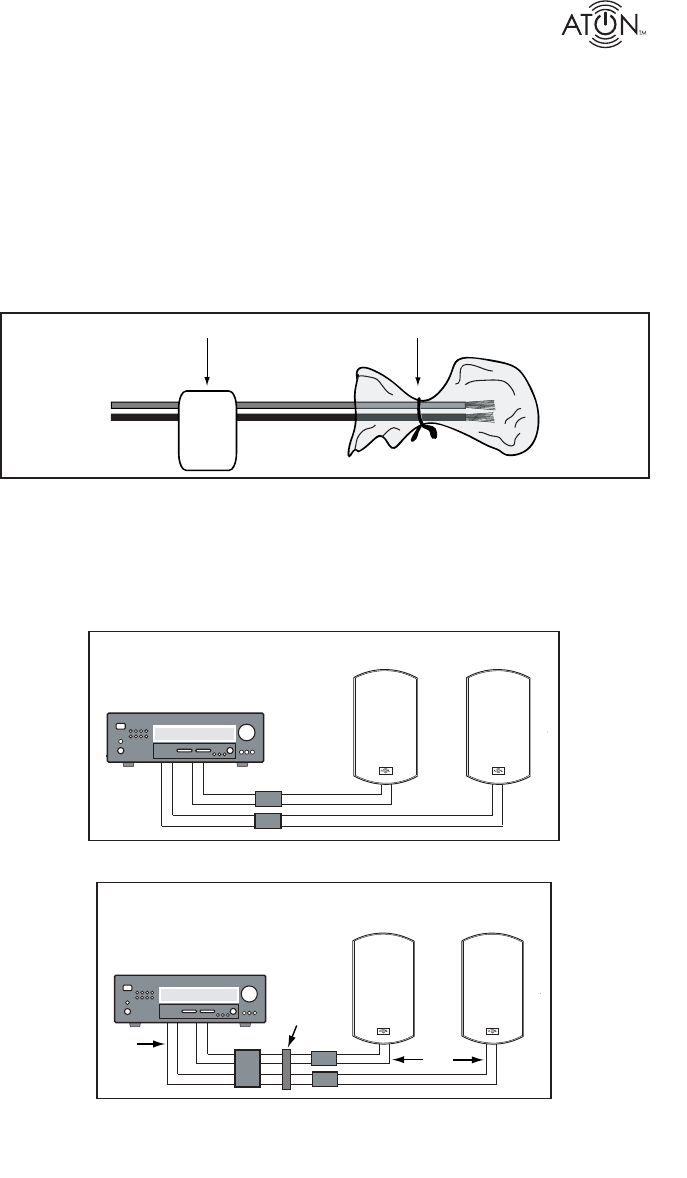
© 2007 • All rights reserved. Page 3
Storm Series Outdoor Speakers
3. Installation
The Installation process is divided into three distinct processes: Wiring, Mounting,
and Connection. After carefully considering the intended application (defi ning a Listening
Area, Mono/Stereo, etc.) specifi c mounting locations can be decided upon. Once the specifi c
locations are determined, installation can commence.
Wiring
Before actually running any wire or cable, take the time to look around each room or area of the
house and plan your wire paths for maximum effi ciency. Look for routes through uncluttered
parts of the stud wall or ceiling that allow you to group all low-voltage wires wherever possible. It
is a good practice to label both ends of all cables and to protect wires by tying a plastic bag over
the ends.
Wiring Methodology
There are three common scenarios for connecting speakers to an audio system. Figures 3.2 to
3.4 show stereo pairs, while Figures 3.5 and 3.6 show examples of mono and DVC applications,
respectively. Each stereo method can also be used for mono or DVC applications.
LEFT
SPK
Plastic BagLabel
A/V Receiver/Amplifier
• Two separate 2 conductor speaker wires run from the A/V Receiver
or amplifier to each stereo speaker.
+
-
+
-
+
-
+
-
Figure 3.1 - Wiring Label & Plastic Bag
Figure 3.2 - Wiring: Amplifi er to Speakers-2 Conductor Direct
• One 4-conductor speaker wire runs from the amplifier to a splice near
one speaker. A 2-conductor wire runs from the splice to each speaker.
A/V Receiver/Amplifier
+
-
+
-
+
-
+
-
Splice
4
Conductor
Wire
2
Conductor
Wire
Figure 3.3 - Wiring: Amplifi er to Speakers-4 Conductor to 2 Conductor














